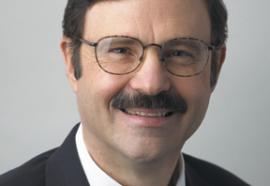King Neptune
Consultant Ed Krapels makes waves with undersea transmission.
“Make no small plans,” the saying goes, and consultant Ed Krapels has taken that to heart. Krapels' vision: Bring significant quantities of renewable energy south from Maine and the Canadian Maritimes, and inject that capacity directly into the congested downtown local grids of America’s large East Coast cities. Who could find fault with that?









